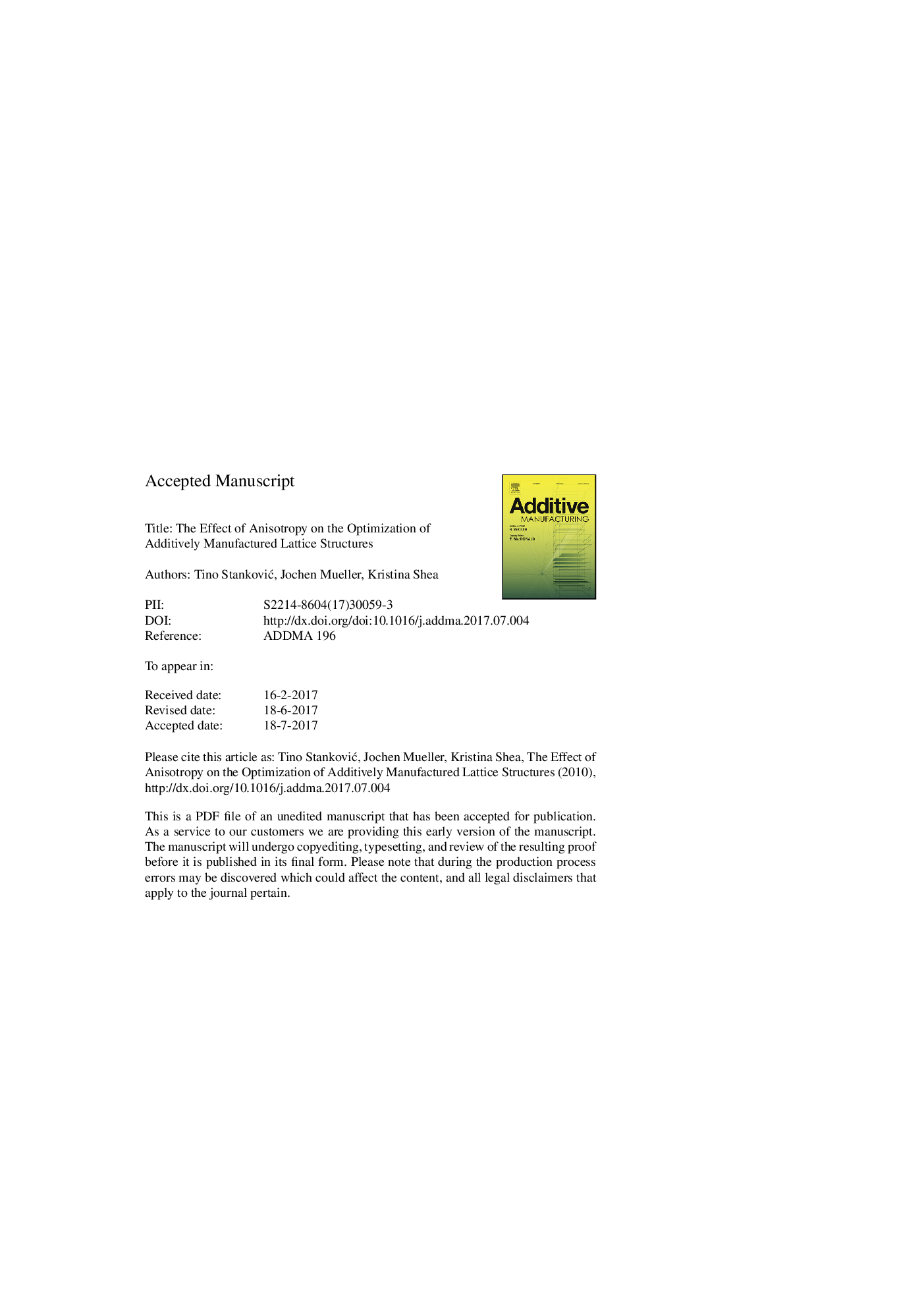| Article ID | Journal | Published Year | Pages | File Type |
|---|---|---|---|---|
| 5020025 | Additive Manufacturing | 2017 | 19 Pages |
Abstract
The build orientation is one the most influential factors on material properties in additively manufactured parts. Advanced applications, such as lattice structures optimized for lightweight, often rely on small safety margins and are, hence, particularly affected, but research has not gone far beyond the pure empirical characterization. The focus of this paper is to investigate in detail the influence of anisotropy induced through fabrication on the mechanical performance and build orientation of whole structures when subject to optimization. First, a material property model for both compression and tension states is formulated. Then, the Generalized Optimality Criteria method is extended for fixed topology lattice structures with respect to constraints in displacement, stress, and Euler buckling. The two latter are formulated as local constraints that are handled in combination with Fully-Stressed Design recursion. The results reveal significant safety threads likely leading to premature failure when using properties from one-directional tests, as is so far the case, rather than the full anisotropy model developed herein. If used inversely, the algorithm yields the optimal orientation of a structure on the build platform, allowing further weight reduction while maintaining the mechanical properties.
Related Topics
Physical Sciences and Engineering
Engineering
Industrial and Manufacturing Engineering
Authors
Tino StankoviÄ, Jochen Mueller, Kristina Shea,
